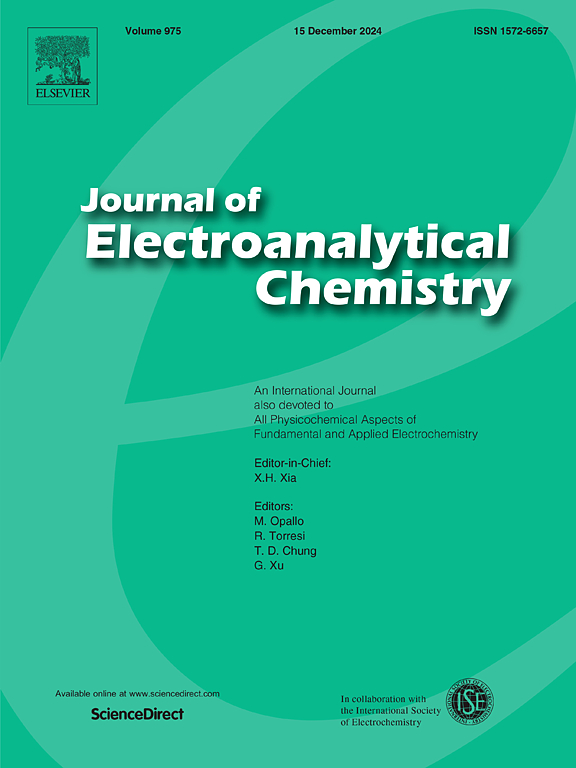Rapid detection of des-gamma-carboxy prothrombin with disposable screen printed ITO electrode based on multiple signal amplification strategy of metal–organic skeleton material
IF 4.1
3区 化学
Q1 CHEMISTRY, ANALYTICAL
引用次数: 0
Abstract
A multi-signal amplification system using an ITO electrode printed with disposable screen ink was developed for the rapid detecting des-gamma-carboxy prothrombin (DCP). Gold nanoparticles, uniformly shaped, were electrodeposited on the ITO electrode to improve conductivity and biocompatibility. To boost the sensor’s sensitivity, isoreticular metal–organic framework-3 (IROMF-3) and methylene blue (MB) were employed to expand the electrode’s surface area and intensify the current signal. Additionally, the avidin-loaded silver nanoelectrode, capable of binding more biotinylated DCP antibodies, further heightened sensitivity. The developed immunosensor effectively detected trace DCP in serum, with a linear range of 0.31 ng/mL to 40 ng/mL, a detection limit of 0.138 ng/mL, and a recovery rate of 97.9–109.2 % under optimal experimental conditions. This study offers a promising approach for the rapid field detection of trace DCP in serum.
求助全文
约1分钟内获得全文
求助全文
来源期刊
CiteScore
7.80
自引率
6.70%
发文量
912
审稿时长
2.4 months
期刊介绍:
The Journal of Electroanalytical Chemistry is the foremost international journal devoted to the interdisciplinary subject of electrochemistry in all its aspects, theoretical as well as applied.
Electrochemistry is a wide ranging area that is in a state of continuous evolution. Rather than compiling a long list of topics covered by the Journal, the editors would like to draw particular attention to the key issues of novelty, topicality and quality. Papers should present new and interesting electrochemical science in a way that is accessible to the reader. The presentation and discussion should be at a level that is consistent with the international status of the Journal. Reports describing the application of well-established techniques to problems that are essentially technical will not be accepted. Similarly, papers that report observations but fail to provide adequate interpretation will be rejected by the Editors. Papers dealing with technical electrochemistry should be submitted to other specialist journals unless the authors can show that their work provides substantially new insights into electrochemical processes.

 求助内容:
求助内容: 应助结果提醒方式:
应助结果提醒方式:


